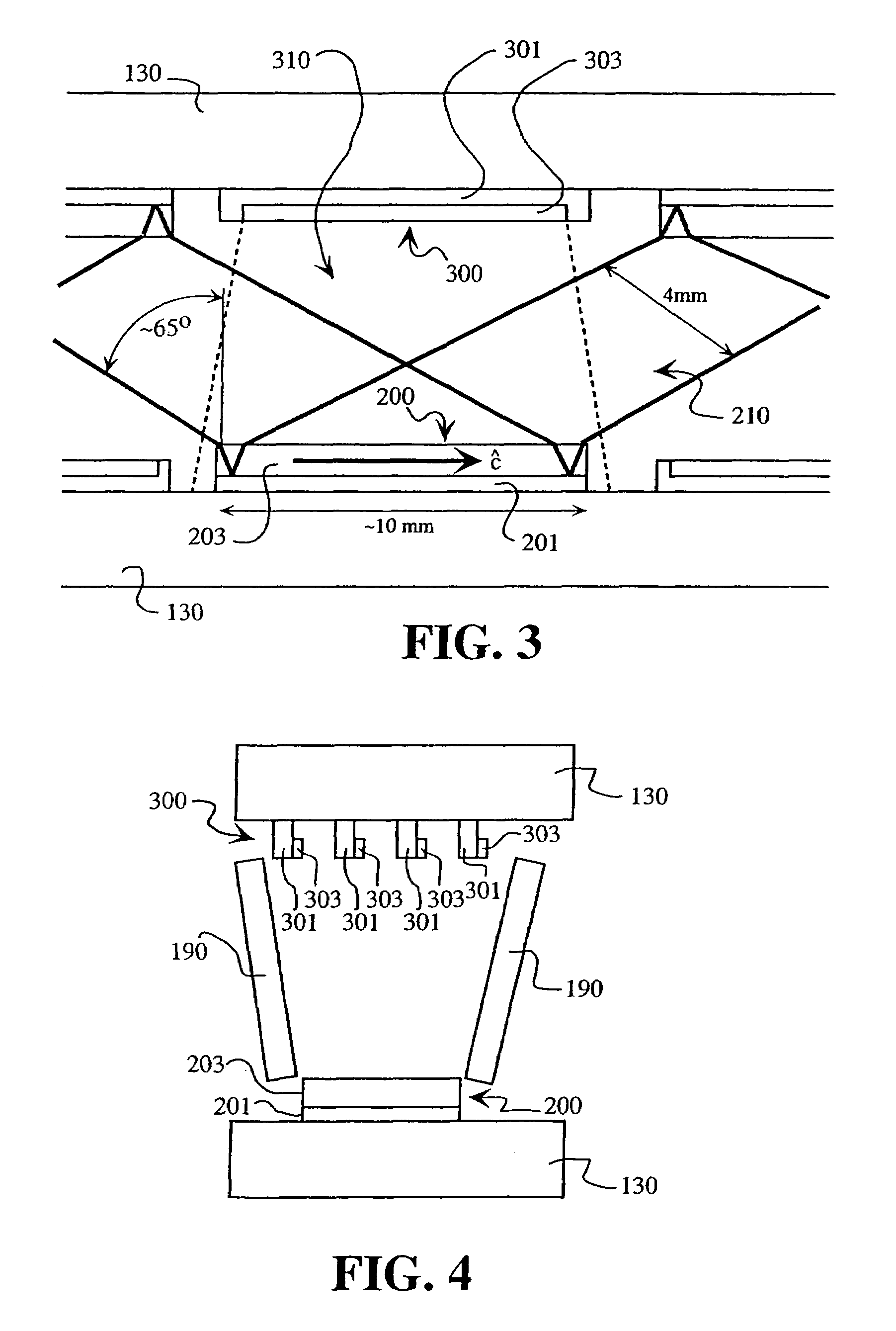Multiple-disk laser system
a laser system and disk technology, applied in the direction of laser cooling arrangement, laser details, active medium shape and construction, etc., can solve the problems of inability to scale in power beyond a few tens of watts, and insufficient power scaling capability and/or gain of such systems, etc., to achieve simple geometry, improve power scaling, and minimize parasitic lasing effects and losses
- Summary
- Abstract
- Description
- Claims
- Application Information
AI Technical Summary
Benefits of technology
Problems solved by technology
Method used
Image
Examples
Embodiment Construction
[0040]The present invention will now be described more fully hereinafter with reference to the accompanying drawings, in which preferred embodiments of the invention are shown. This invention may be embodied in many different forms and should not be construed as limited to the embodiments set forth herein. Further, the dimensions of layers and other elements shown in the accompanying drawings may be exaggerated to more clearly show details. The present invention should not be construed as being limited to the dimensional relations shown in the drawings, nor should the individual elements shown in the drawings be construed to be limited to the dimensions shown.
[0041]A laser apparatus 100 according to an embodiment of the present invention is shown in FIG. 2. The laser apparatus 100 comprises pump cavity 101 with a plurality of laser disks 200 and a plurality of laser pump devices 300 mounted on heat sink bars 130. The laser apparatus 100 also preferably further comprises a highly ref...
PUM
 Login to View More
Login to View More Abstract
Description
Claims
Application Information
 Login to View More
Login to View More - R&D
- Intellectual Property
- Life Sciences
- Materials
- Tech Scout
- Unparalleled Data Quality
- Higher Quality Content
- 60% Fewer Hallucinations
Browse by: Latest US Patents, China's latest patents, Technical Efficacy Thesaurus, Application Domain, Technology Topic, Popular Technical Reports.
© 2025 PatSnap. All rights reserved.Legal|Privacy policy|Modern Slavery Act Transparency Statement|Sitemap|About US| Contact US: help@patsnap.com



